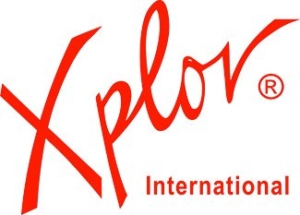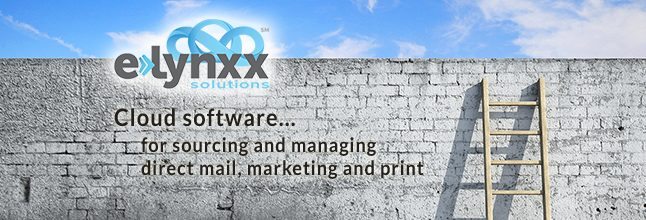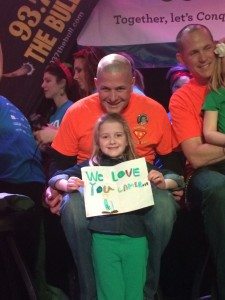I was recently introduced to Mike Jackson, CEO of eLynxx Solutions and although I was not familiar with eLynxx, Mike certainly had some interesting insight on some of the relevant issues in our industry.
I decided to go back to Mike, ask a few more questions and share them with the E-Document News audience.
Skip: For our readers who are not familiar with eLynxx, give us your 15 second elevator pitch.
Mike: eLynxx Solutions provides cloud software that serves a very specialized need in the marketplace. Our software is purpose-built to help organizations plan, source and manage the acquisition of custom marketing materials such as direct mail, publications, POP signage and all things print. Our platform connects stakeholders and coordinates all steps from planning to payment. In short, it strengthens the marketing supply chain by bringing complete order and transparency to a process that’s usually managed through a maze of emails and spreadsheets.
Skip: Can you tell us about eLynxx itself and perhaps a short history?
Mike: I’ll try to give you the short description of a long history since eLynxx has been around since 1975. Throughout our forty year history, we’ve helped buyers and producers of custom print work more effectively together to the benefit of both parties. We have extensive experience and expertise working initially with printers to help them compete for GPO projects and later expanding our focus to work with private sector print buying organizations.
A pivotal point in our history came when we invented and patented a method for sourcing custom print. This method solved the so called iron triangle, allowing print buyers to achieve required product quality, on time delivery and lowest price – all at once. Conventional wisdom had previously been that you could only achieve two out the three at any given time.
Today’s eLynxx is principally a software company offering the most robust cloud software available to help print buyers and their organizations achieve cost and operational efficiencies.
Skip: From a positioning stand point, where do you see your products and services in the industry?
Mike: When it comes to buying and managing custom print, organizations have to decide whether they want to have responsibility for it or if they’d rather have someone else do it for them. If they want a third-party to take everything over, there are plenty of capable firms but that’s not our business. When an organization wants to maintain full control of everything and manage it themselves, we can greatly assist them with a solution that’s rather unique in the market.
The concern over working with a BPO or broker that I most often hear in the market is that it requires relinquishing control. Decisions over critical elements like what vendors are used, how much is paid and so forth, are placed in someone else’s hands. Depending on the arrangement, there may be limited transparency or access to information. But on the surface, the business case may look attractive because their buying power likely brings economies to the table.
When organizations maintain control by employing people to directly source and manage projects, they have the benefit of being in charge of everything but typically lack tools made for the job. Too often it’s a highly manual process that relies extensively on spreadsheets, memory, and email. That’s where we come in. As a purpose-built tool built for print buyers, eLynxx software positions organizations to have the control they want and the economic benefit they need. It’s not one or the other.
Unlike third-party arrangements, eLynxx has no print capabilities or vendor relationships. Our clients use our software to empower their own people, streamline their own process and work more effectively with their own trusted vendors. When working directly with print vendors, the inherent profits of the broker model are eliminated. And when our patented sourcing method is applied, the cost of print is reduced to levels that are often favorable to what the third-parties achieve through volume discounts.
So in short, we’re positioning organizations to have the best of both worlds – full control and the most competitive cost. We sum it up as your people, your process, your vendors, better results.
Skip: Let’s talk a little about the technology. How can enhanced workflows change an organization?
Mike: When it comes to custom print, every organization has some level of prescribed or required workflow in the lifecycle of a project. The stages typically begin with planning and then move to sourcing and production management before concluding with approvals and payment. When they’re planning they may be going to vendors for budget pricing. When they’re ready to buy, they may do so under a contract, through a competitive bid and award process or they may even hand it to their favorite vendor without competition. And once a job is in the hands of a vendor, someone has to monitor whether the project is being produced on time, at quality standards, and ultimately ensure that the vendor is paid the right price.
The steps that happen along the way usually involve a lot of people and there are often change orders after the project is in production. So there are a lot of moving parts. When you are in the spreadsheet and email world, you rely heavily on people’s gray matter to insure that details are cared for, that boxes are checked, and that things are done in accordance with policy. Technology can effectively deal with all this complexity and transform workflow. For example, our eLynxx software allows organizations to streamline complex workflows and dependencies in a way that creates full accountability, transparency, and record keeping without adding friction. This allows our clients to embrace the complexity and deal with the workflow in a way that assures compliance. When people are freed from chasing tactical details, they’re able to focus on strategic actions.
Skip: Two questions that are somewhat related. First, what impact is the cloud going to have on how we do business and second, how will the cloud affect communications management?
Mike: The cloud is having a bigger impact on business every day. One obvious attraction point is that organizations don’t have the traditional investment in infrastructure and support costs. One common concern is that their information is being stored somewhere outside of their own four walls, so to speak. But we see a growing number of organizations, even ones who not long ago were averse, coming to embrace cloud-based solutions.
From an operations standpoint, I think the fundamental opportunity with the cloud is that it provides a means to access information, execute actions, and collaborate from anywhere, at any time. With our software, for example, all you need are internet access and credentials to login. This means people are no longer tethered to their desks or phones. The ability to see and do things from anywhere at any time makes people more productive.
Skip: Do you believe that more companies will be looking toward the software-as-a-service model?
Mike: Absolutely. I think that not only will more companies look toward it, but those companies who are already using it will look to do more things with it. I foresee a day, not too far out, where the majority of activities are happening through cloud software.
Skip: Compliance is a major issue for organizations. What challenges do organizations face and how have you been able to help them?
Mike: In print procurement, the biggest challenge I see with verifying compliance is that it’s usually done on a spot-check basis. If an organization wants to pressure test whether they’re meeting compliance objectives, they have to pick random samples of jobs. The next step involves grabbing data in many forms from a lot of disparate systems. This often includes auditing email trails and may even require doing interviews to document recollection of phone conversations. So when compliance is monitored through a manual, spot-check process it’s time consuming and by definition incomplete.
What we have done with eLynxx software is insure that all jobs are managed through the same system allowing all activities, communications, and approvals to be indelibly captured in one place. Whether metrics or actions are based on time, quality or cost, our clients always have an up to date single repository. This not only affords uniform compliance monitoring, but it also means you can proactively see when a job is about to go out of compliance. It’s a very powerful business tool.
Skip: What is the importance of balancing compliance with operation efficiency?
Mike: Getting back to my example of a more manually driven environment, if you want 100% compliance, the only way you get to that is by sampling 100% of the jobs. That means you have to add more personnel in the form of analysts and auditors. All that adds excessive administrative cost to the point where you can’t afford to get to 100% compliance. Compare that with using a purpose-built platform that automatically monitors and measures compliance as work is being done, not as a separate effort after the fact. Not only can balance be achieved, the return almost always exceeds the investment.
Skip: If I am looking for software, should I build it, buy it or both? What are the pluses and minuses?
Mike: I meet many organizations that have progressed beyond using spreadsheets to procure and manage custom print projects, often by creating an in-house system. The thing they have in common is they believe that if they build something they will get exactly what they want but not have to pay for things they don’t want or don’t need.
Now, if you’ve ever been involved in one of these projects, and I have, what you find more often than not is that, they take longer than anticipated to build, they end up costing more than expected, and you never end up with everything you’d hoped for. There’s also a requirement for operational people to be heavily involved in the design and acceptance testing which detracts from their ability to do their core jobs. So organizations typically end up dealing with trade-offs anyway, so what they get in the end is something that is less than 100% of what they wanted.
Assuming you get all this right in the first place, more unforeseen issues loom on the horizon. If they haven’t made a commitment to continually support and upgrade the software to meet their changing business needs then it will start to fall out of phase with requirements on day two. I have met organizations that are working with 10 year old home-grown systems and tell me that because it was never updated they’ve had to create numerous manual workarounds. It’s a back to the future scenario.
I think the advantage of buying it is that you are typically dealing first of all with software that was purpose-built for solving the common problems of many organizations. This brings broader perspective. And because the software is the core business of the provider, they are always looking to innovate and keep pace with changing market demands. Access to these upgrades typically comes at little to no cost to individual clients because the burden is shared across the provider’s entire client set. In the case of eLynxx software, for example, upgrades are included in the subscription price so our clients are always using current software.
The benefit in this regard, with eLynxx in particular, is that our software is designed to be tailored to fit each client’s specific business. By that I mean clients don’t have to change the way they do business to fit our software. Instead, our software is configured to fit the way they do business. That’s one of the many things that make eLynxx software unique in the marketplace.
Skip: Mike, thanks for taking the time to speak with me and share some additional thoughts and insights. Anyone wanting to learn more about eLynxx can go to their website at www.elynxx.com or can reach Mike at michael.jackson@elynxx.com.
Tamir: It’s good to talk to you, Skip. GMC Software helps companies communicate with their customers and employees. We empower organizations to create stronger engagements with timely and relevant communications. We are the only company that provides the means for business users to develop contextual, highly individualized communications across all channels that span the entire customer journey. As a leader in customer communications, GMC supports thousands of clients and partners in banking, insurance, healthcare and service providers around the world.






